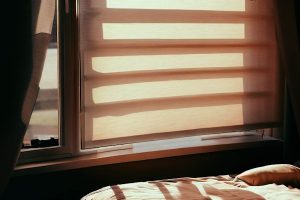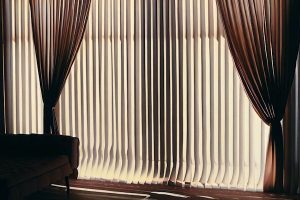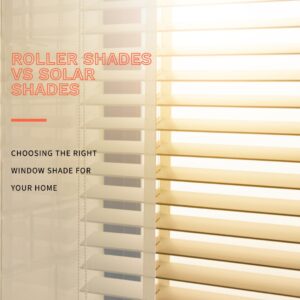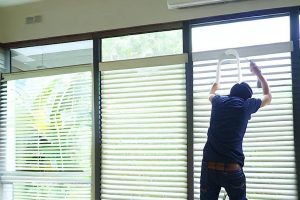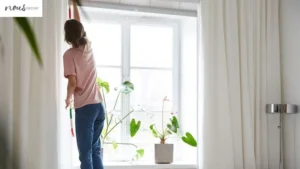When it comes to window treatments, there are so many options to choose from. Two of the most popular types of shades are Pleated Shades Vs Honeycomb Shades.
Both have their respective advantages and disadvantages, so when deciding which one is right for you, it’s important to understand the differences between them.
In this article, we at Nousdecor will look at how pleated shades and honeycomb shades differ in terms of style, light control, energy efficiency, durability, cost, room darkening feature, cordless lift options, motorized options and child & pet safety.
Key Takeaways of Pleated Shades Vs Honeycomb
- Pleated shades offer more light control options, while honeycomb shades provide superior insulation and sound reduction.
- Honeycomb shades tend to be more expensive than pleated shades due to their construction and design features.
- Honeycomb blinds offer better protection from break-ins than pleated shades.
- Pleated shades are easier to clean and maintain than honeycomb shades.
Style
Pleated shades and honeycomb blinds both offer unique styles, but one may suit your space better than the other. Pleated shades feature a crisp pleat that creates an elegant look for any room.
They are available in a variety of colors, textures, and sizes to match any space’s decor. For more information on pleated shades, consider visiting our pleated shades explained article!
Honeycomb blinds also come in many different colors and styles. The distinctive honeycomb pattern offers an attractive contemporary look with its three-dimensional effect created by individual cells within the fabric. It can be further enhanced with decorative tapes or trims.
Both types of window treatments help to create a stylish atmosphere in a living or work environment, what practical window covering options!
Ultimately though, both window treatments offer plenty of variety when it comes style and design options – so no matter which you choose, you’re sure to find something that will fit your needs perfectly!
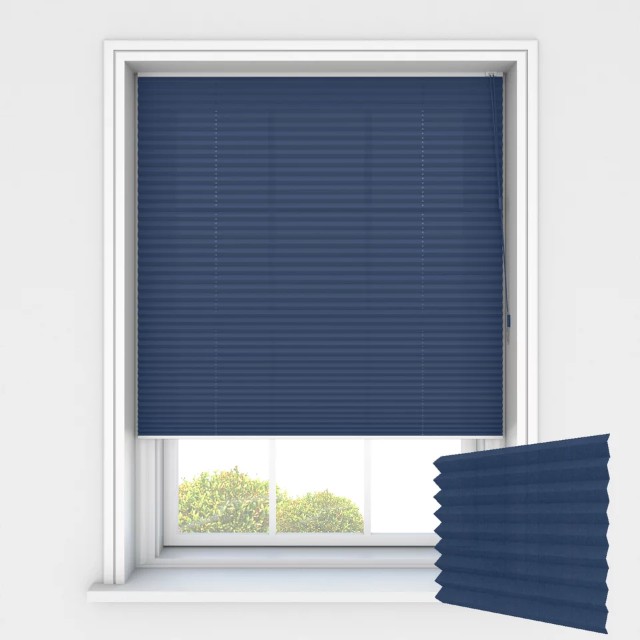
Light Control
You have the power to choose how much light enters your home – so why not pick a window covering that offers superior control? When comparing pleated shades and honeycomb, both offer great features when it comes to controlling the amount of sunlight in your home.
Pleated shades are lightweight and can be easily adjusted with a cord or wand. Their pleats trap air and form an insulating layer that helps regulate temperature. Honeycomb shades come in both single-cell, which provides moderate insulation, and double-cell, which offers greater insulation value.
These versatile window treatment solutions also feature adjustable slats for additional control over the amount of light entering your room. For even more precise control of light levels, you can opt for top-down/bottom-up options or sidelight panels to cover windows on either side of a door or window frame.
When it comes to light control, however, pleated shades offer more options than honeycomb blinds because they can be made from more opaque fabrics which block out most of the incoming natural sunlight while still allowing some soft filtered light into the room if desired.
Honeycombs tend to diffuse light more than block it out completely, so these beautiful interior decor items are not ideal for darker spaces such as bedrooms where complete darkness is needed for sleeping during daytime hours.
The choice between pleated shades and honeycomb blinds ultimately depends on what style you prefer and how much privacy or darkness you require for your particular space.
For those seeking a classic look with improved light control capabilities, pleated shades might be the better option; conversely, those who need less coverage but want modern style should consider honeycomb blinds instead.
Each style has its advantages when it comes to controlling light levels – but there’s another important factor to consider when choosing window treatments: energy efficiency.
With their double-layer design, honeycomb shades provide superior insulation compared to pleated shades, helping keep your home cool during hot summer months and warm during cold winter months while reducing your energy bills all year long…
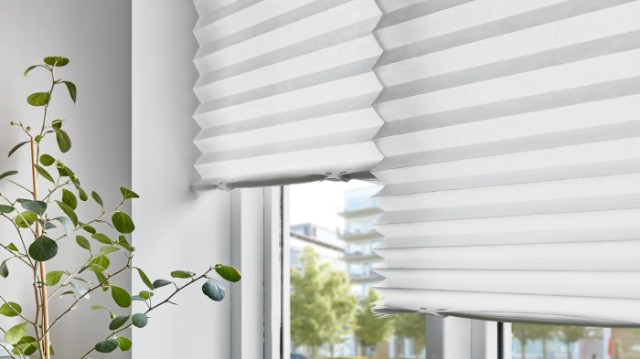
Energy Efficiency
Cut your energy bills and keep your home comfortable with the superior insulation of honeycomb shades! Honeycomb shades are constructed with multiple layers that create a pocket of air between the fabric and window.
This pocket of air acts as an insulator, blocking out extreme temperatures from entering or leaving the room. Not only do honeycomb shades help maintain consistent indoor temperatures, they also help reduce sound pollution from outside sources, providing a layer of protection for both you and your home.
Here are three reasons why honeycomb shades outshine pleated shades when it comes to energy efficiency:
- The double-layered construction traps air in pockets to provide insulation against outdoor temperatures.
- They are available in light-filtering fabrics that block harsh sunlight while still allowing natural light into your home.
- The cellular structure helps save on heating costs by up to 25%.
In addition to their energy-efficient design, honeycomb shades offer superior style options such as cordless lift systems and motorized operation for added convenience.
With so many benefits, it’s no wonder why more homeowners are choosing these luxurious window treatments for their homes over other traditional options like pleated blinds or curtains.
Plus, they’re easy to maintain and durable enough to last for years down the line – making them a great choice for any budget.
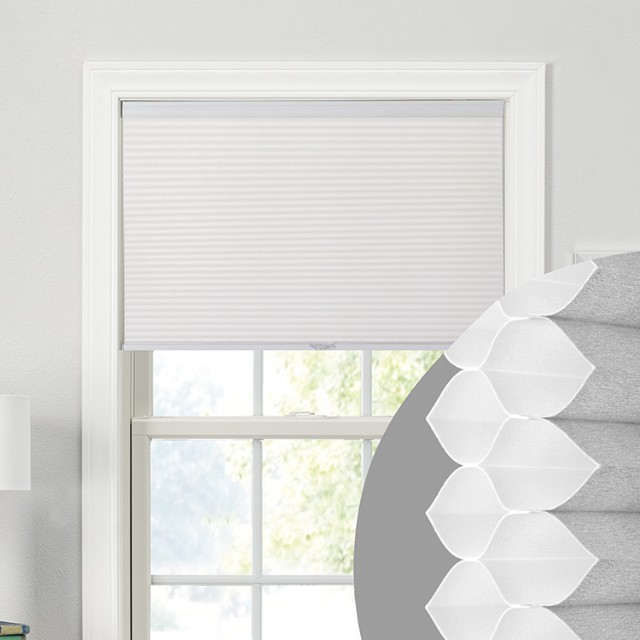
Durability
Honeycomb shades offer unbeatable durability, providing a long-lasting window treatment solution that won’t succumb to wear and tear over time.
The honeycomb construction of these shades helps to create an effective barrier between the interior of the home and outdoor elements, helping them to last for years even with frequent opening and closing.
In addition, they are available in a variety of materials, like fabric or vinyl which can be wiped down easily for fuss-free maintenance. Plus, the unique pleats help ensure that any dust particles don’t accumulate inside the shade itself.
On the other hand, pleated shades also provide good durability as well. The heavier fabrics used in their construction help protect against UV rays while ensuring that they will last for years without needing to be replaced.
They also come with a range of options when it comes to color and pattern choices so you can find one that fits your style needs perfectly. However, due to their design structure they may not be able to block out as much light as honeycomb styles do and may require more upkeep than other types of window treatments.
When it comes to deciding between pleated shades vs honeycomb shades on the basis of durability, both options have something valuable to offer. However, when weighing up all factors such as ease of cleaning and light-blocking ability then honeycomb is likely the superior choice overall.

Cost
When it comes to cost, both of these window treatments can be quite affordable depending on the style and size you choose. Pleated shades offer a wide range of prices, from budget-friendly options to more expensive designer looks.
If you don’t want to spend too much money, then pleated shades are definitely the way to go since they come in many sizes and styles that fit any budget.
On the other hand, honeycomb shades tend to be more expensive than pleated shades due to their construction and design features that provide superior insulation and durability.
Here are some key factors that influence the cost of both pleated shades and honeycomb shades:
- Quality – The price will depend on the quality of materials used in manufacturing or if custom options have been included.
- Size – Larger windows may require multiple panels which will increase your total cost.
- Installation – Professional installation fees should also be factored into your final costs.
- Treatment type – The type of fabric treatment used can affect prices as well.
- Specialty features – Motorization or decorative details can add additional costs as well.
Overall, both pleated shades and honeycomb blinds are good options for those looking for a stylish window covering solution without breaking their budget.
It is important to take all aspects into consideration when deciding between these two window treatments so you get one that best fits your needs while staying within your budget constraints.
With careful consideration of these factors, you can find the right window treatment option for your home at an affordable price point with either pleated shade or honeycomb solutions.
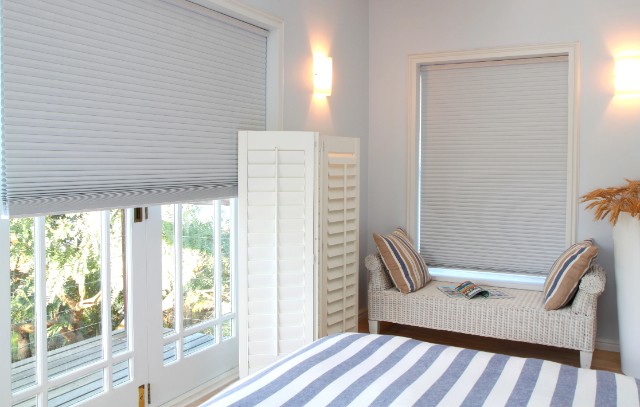
Privacy & Security
When it comes to privacy and security, both pleated shades and honeycomb blinds offer varying levels of protection for your home. Pleated shades provide coverage that can block out light from entering the room, as well as providing more privacy than their open-weave counterparts.
Honeycomb blinds on the other hand are designed to be tightly woven and sealed off, making them a great option for providing a tighter seal against air drafts or curious eyes. However, they also tend to be less opaque than pleated shades, so you may not get as much privacy as with these types of blinds.
In terms of security, both options offer a good level of protection from break-ins since they are installed in front of windows. Honeycomb blinds are typically sturdier than pleated shades due to their thicker material construction, meaning they will be harder to break into if someone were to try.
On the other hand, pleated shades can often be pushed up easily from below by potential intruders which means they don’t always provide optimal security against burglars or vandals.
Ultimately when deciding which option is best for your home’s privacy and security needs it depends on what type of look you’re aiming for and how important this factor is to you.
If total blackout is paramount then honeycomb blinds may not be ideal; however if you prefer a more natural light filtering effect then pleated shades could work better. Either way though, there’s no doubt that either one will give you peace of mind when it comes time to install them in your windows.
Installation
Now that I have discussed the privacy and security benefits of both pleated shades and honeycomb shades, let’s look at the installation process.
The installation of window treatments plays a large role in how they function and how long they last. When it comes to installing these two types of window coverings, here are four important items to consider:
- Cost: The cost of installation for pleated shades is usually higher than honeycomb shades because their unique shape can be more difficult to install.
- Time: Pleated shades typically take longer to install because there’s more fabric to work with as compared to honeycomb which has few fabric parts that are easy to assemble.
- Method: Both pleated and honeycomb shades require specialized tools for a successful installation, but some methods of mounting require different levels of expertise from an installer when it comes to pleated vs honeycomb shades.
- Installation space: Honeycomb blinds must be installed inside or outside the window frame while pleated blinds can also be mounted within the window recess itself if desired – this additional option gives pleated blinds an advantage in terms of useable space within your home or office environment since no extra room is required for fitting them into place.
It’s clear that each type has its own advantages and disadvantages when it comes time for installation, so whichever you choose make sure you understand all the specifics before committing yourself – proper planning will go a long way towards ensuring a successful fit!
With all this in mind, let’s move on now and examine the cleaning and maintenance requirements associated with these two styles of shade treatments.
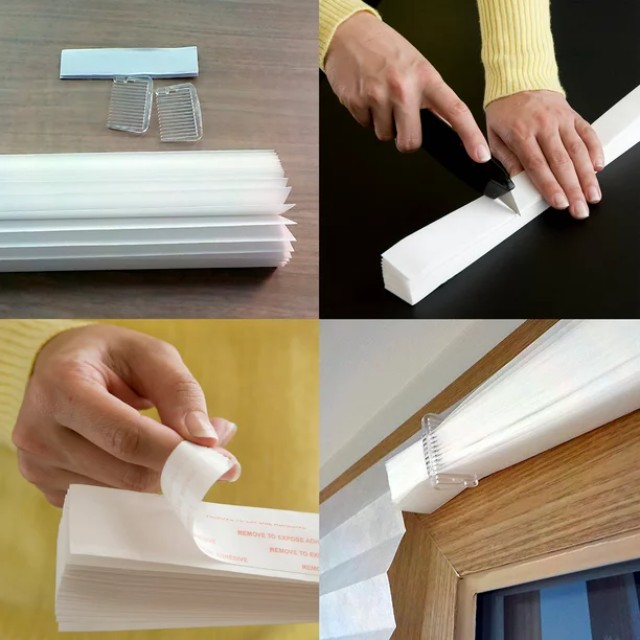
Cleaning & Maintenance
Maintaining the longevity of your window treatments is essential, and it’s important to know the differences between pleated and honeycomb when it comes to cleaning and upkeep. Pleated shades are generally easier to clean given their simpler design, with dusting being the primary method for keeping them looking great.
Vacuuming can also be used if desired. Honeycomb shades, on the other hand, require more frequent cleaning since they tend to accumulate more dirt due to their design which has more intricate folds. A vacuum with a brush attachment or a soft cloth should be used regularly in order to remove dirt and dust from the fabric surface.
It’s important not to use any harsh chemicals or cleaners as this could damage or discolor the fabric material. With proper maintenance and care, both pleated and honeycomb shades will last for years without having to replace them too often.
As such, taking time out of your schedule every few weeks for regular cleaning is recommended in order ensure that you get maximum life out of them.
Moving on from cleaning and maintenance considerations, another factor worth considering when choosing between pleated shades and honeycomb is their room darkening feature.
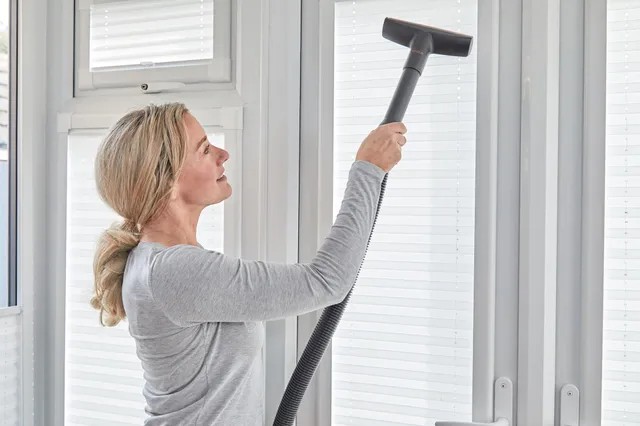
Room Darkening Feature
Comparing the two, pleated and honeycomb window treatments have different room darkening capabilities.
Pleated shades are especially effective at blocking out light since they fit tight against the window frame. They come in a variety of colors, fabrics, sizes, and textures that can match any interior décor.
On the other hand, honeycomb shades offer insulation benefits as well as greater room-darkening features.
The fabric is thicker and heavier than that of pleated shades which helps to keep heat or cool air inside the house. In addition, when opened from the top-down or bottom-up, honeycomb shades provide an extra layer of privacy while still allowing natural light to filter through.
Moving on to cordless lift options for both pleated and honeycomb shades, this allows users to easily adjust their window treatments with minimal effort and no cords exposed for children or pets to play with.
Pleated shades are available in either manual or motorized options while some honeycomb shades feature a retractable cord system that can be stored away after use so as not to detract from its appeal.
With both styles providing convenience without compromising on safety or style, it’s easy to find a solution that works best for you and your home.
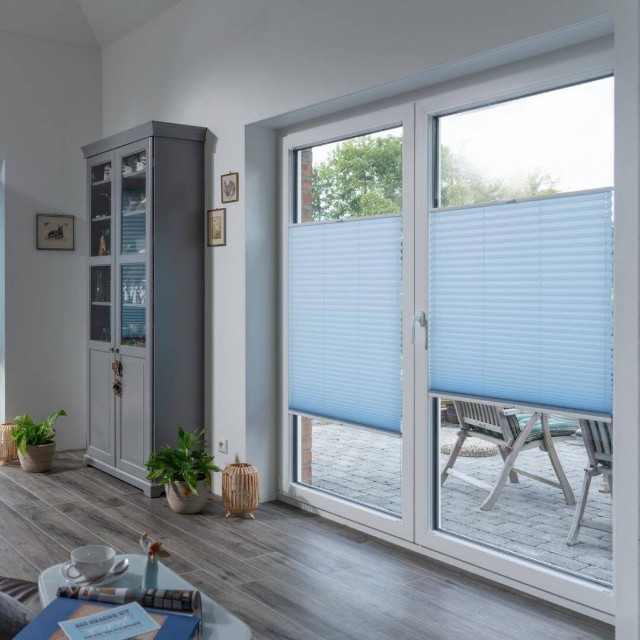
Cordless Lift Options
You can easily adjust your window treatments with a cordless lift system, allowing you to enjoy the convenience of raising and lowering blinds without having to worry about cords getting in the way.
Pleated shades and honeycomb shades both offer cordless lift systems which vary in style and function. Here are some advantages of using a cordless lift system:
- Ease & Convenience: With no strings or cords to keep track of, it’s easy to adjust your blinds from any side in one smooth motion.
- Safety: With small children around, it can be difficult to manage dangling cords on traditional window blinds or shades. Cordless models eliminate this risk altogether as they depend solely on the operation of a lever or button for adjustment rather than dangling cords that could cause harm or entanglement when tampered with by young hands or pets.
- Aesthetic Appeal: Without visible strings or cords, cordless window treatments create an uncluttered look that enhances the overall beauty of any room’s decor style, from modern minimalism to classic refinement.
- Noise Reduction: As there are no longer metal pulleys near the windowsill, noise pollution is diminished significantly when compared to other models that use string-style controls for adjustments and operations.
Cordless lifting systems provide many benefits while still maintaining an affordable price point making them ideal for nearly any home design budget; furthermore, they come in various colors so you can find a perfect match for your current interior decor scheme!
Easy installation makes them an excellent choice for those who need to replace their existing window coverings quickly and without hassle – making it easier than ever before to get custom-fitted blinds at home without professional help!
Transitioning into motorized options is another great way homeowners can upgrade their existing window treatments with enhanced convenience and modern appeal!
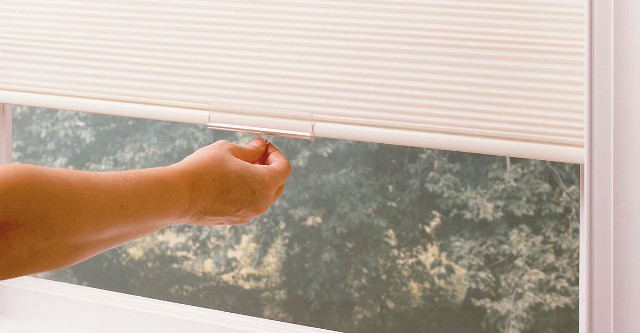
Motorized Options
Motorizing your window treatments is an easy way to experience the convenience of automated control without compromising on style or budget.
When it comes to pleated shades and honeycomb shades, motorized options are available for both styles. Motorized pleated shades offer efficient operation with a single touch of a button and can be motorized using either a wired or battery-powered system.
Honeycomb shades also come in motorized versions that allow you to easily open and close them with the push of a button. As far as safety features go, all motorized systems come equipped with built-in child and pet safety sensors that will stop the shade when they detect something obstructing its path.
This ensures that children or pets cannot get caught in the shade’s cords or mechanism when operating automatically. With either type of shade, you’ll have access to reliable automation technology while still maintaining privacy and blocking outside light when needed.
Making the switch from manual operation to automated control allows you to enjoy increased convenience for any space in your home while not sacrificing style or affordability in the process.
With these child and pet safety features included, there’s no need to worry about potential harm coming to your loved ones from moving parts on automated window treatments; instead, you can rest assured knowing they’re safe when enjoying your new automated lifestyle!
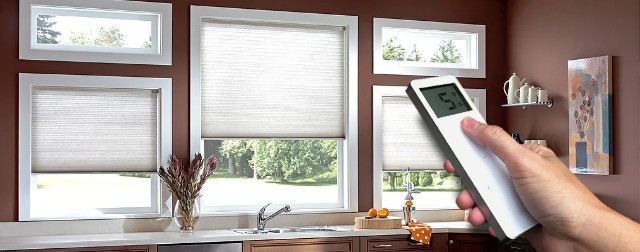
Child & Pet Safety
With automated window treatments, you can be ensuring window treatment safety knowing your children and pets are safe from any potentially hazardous moving parts.
Pleated shades and honeycomb varieties alike offer motorized solutions that are made with extra safety features to keep curious little ones out of harm’s way.
This includes cords that retract when not in use, as well as cordless options for motorized blinds and shades. Child-safe technology has been incorporated into many new models, so you can operate your window treatments without worry.
The best part is that both pleated shades and honeycomb blinds come with these child-friendly features. Both styles also have a range of light control capabilities, from sheer fabrics to blackout materials, providing plenty of options for the perfect balance between natural light and privacy.
You’ll be able to maintain an inviting atmosphere in your home while ensuring the safety of your children or pets at all times.
No matter which style you choose—pleated shades or honeycomb blinds—you can trust they will provide superior protection against potential hazards such as exposed cords or mechanisms, giving you peace of mind when it comes to safeguarding your loved ones!

Frequently Asked Questions
Conclusion
When it comes to deciding between pleated shades vs honeycomb shades, there are a few key factors to consider. Pleated shades have more style options, but honeycomb shades offer better light control and energy efficiency. Honeycomb shades also tend to be more durable and cost-effective.
Plus, they can provide greater room darkening with cordless lift and motorized options for added safety for both children and pets. Ultimately, it’s up to you to decide which shade works best for your home based on these qualities.
Want to see how pleated shades fare against cellular shades? Then check out our article on Pleated Shades Vs Cellular Shades instead!

